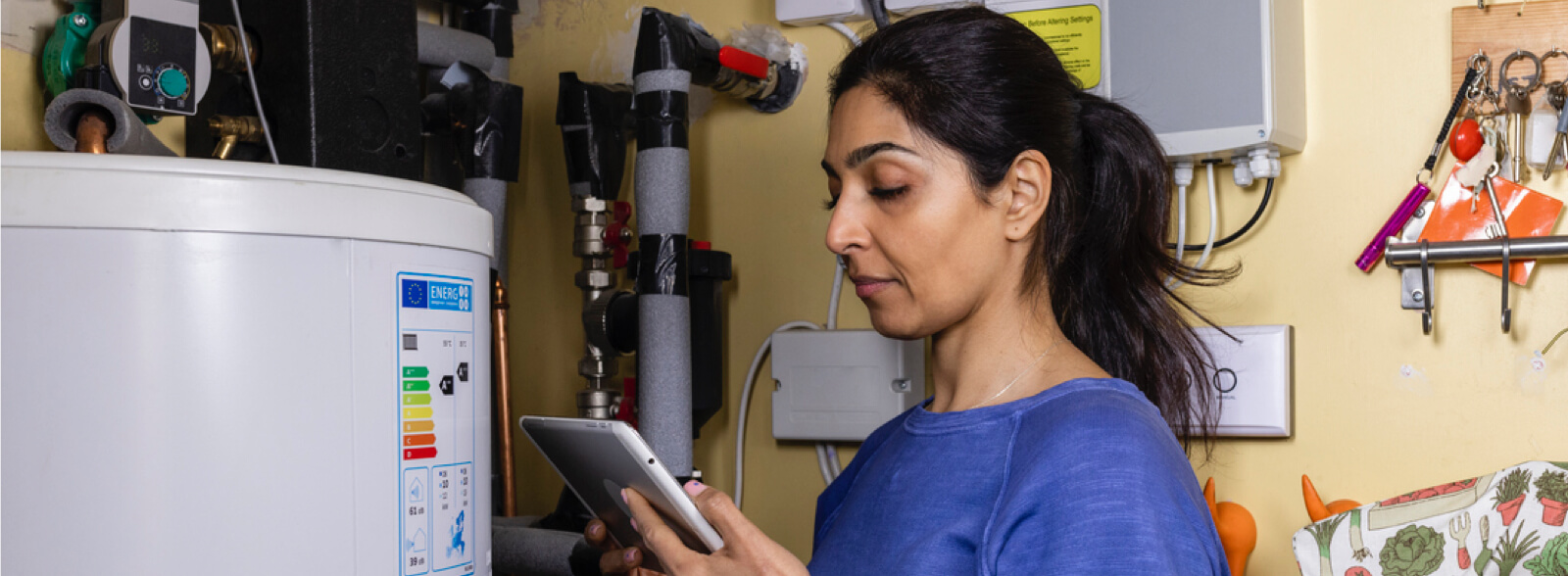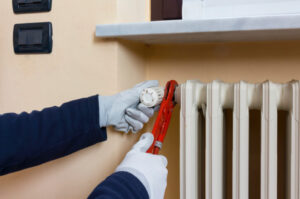Do-It-Yourself Home Energy Audit

Home energy audits can point the way to efficiency improvements and big savings
In an audit, you’ll take inventory of potential leaks, excess electricity use, and inefficient appliances and equipment to uncover opportunities to save energy and money.
Review the checklist below to get an idea of what parts of your home you’ll assess and what types of materials you’ll need to solve potential problems. If you’re already aware that some work is required, pick up the materials ahead of time. You may also want to recruit some help in case you need an extra set of hands.
Here are the materials needed to fix common issues you may come across:
- Caulk
- Weatherstripping
- Insulation
- Plastic sheeting for windows
- LED bulbs
- Duct sealant (mastic)
Home Energy Checklist
The following checklist outlines possible problems and their solutions in different areas of your home. Download the checklist so you can print it and take it with you as you inspect your home.
| Checklist Items | Problem | Solution | |
|---|---|---|---|
|
Exterior Walls, Basements, Attics, and Crawl Spaces |
Insufficient insulation (insulation that has receded away from the edge of the joists) |
|
|
|
Electrical Outlets |
Cracks or air leaks |
|
|
|
Switch Plates |
Cracks or air leaks |
|
|
|
Overhead Lighting and Lamps |
Lights turned on when not needed |
|
|
|
Wiring |
Air leaks, cracks, or holes in walls around wiring |
|
|
|
Windows and Frames |
Air leaks in window frames Drafty old windows Cracks near or in window frames |
|
|
|
Baseboards |
Cracks |
|
|
|
Door Frames and Weatherstripping |
Drafts and air leaks |
|
|
|
Doors |
Cracks or holes |
|
|
|
Fireplace |
Drafts and air leaks |
|
|
|
Attic |
Cracks and air leaks, especially those at an attic entrance near an air-conditioned or heated room |
|
|
|
Air Conditioning |
Cracks and air leaks, particularly around window-mounted units Air filters |
|
|
|
Air Registers and Ducts |
Dirty registers decreasing airflow Air leaks or disconnected ducts |
|
|
|
Pipes and Plumbing |
Air leaks, cracks, or holes surrounding plumbing |
|
|
|
Foundation |
Cracks or holes |
|
|
|
Siding |
Cracks and air leaks |
|
|
|
Mail Slots |
Cracks and air leaks |
|
|
|
Refrigerator |
Air leaks |
|
Starting Your Energy Assessment
Once you’ve gathered the materials and extra help, if needed, you’re ready to start your assessment. Below is a list of common energy inefficiencies. We recommend consulting a qualified auditor or contractor for harder-to-reach spots, such as crawl spaces, attics, and other constricted areas.
- Check the insulation levels in exterior walls, basements, attics, and crawl spaces.
- Look for holes and cracks in the foundation, walls, windows, doors, plumbing, and wiring. Pay extra attention to any air leaks that need insulating.
- Make sure your fireplace flue is tightly closed.
- Gauge lighting usage. Are you leaving lights on during the day or overnight? Can you switch to more efficient LED bulbs?
As you move through your home, carry a bag or toolbox with supplies so you can address problems on the spot or mark the area with colored tape so you can retrace your steps later.
Safety Tips
Check to make sure that any appliances burning fuel, like your stove or space heaters, have at least one square inch of vent opening for every 1,000 Btu of appliance input heat. You may need to consult a qualified professional to avoid a backdraft, which is when flue gas enters your living space instead of exiting through the venting system of a combustion appliance.
Professional Home Energy Audit

Have you decided that you’d rather leave all of this to professionals? Learn more about what you can expect from a professional energy audit and how to find a qualified energy auditor.
Free Home Energy Test
Are you wondering how much energy you use every year? The Environmental Protection Agency’s Home Energy Yardstick compares your home’s annual energy usage with that of similar homes. By answering a few basic questions, you can get:
- Your home’s Home Energy Yardstick score.
- Insights into how much of your home’s energy usage is related to heating and cooling versus other everyday uses like appliances, lighting, and hot water.
- Links to ENERGY STAR guidance on how to increase your home’s score, improve comfort, and lower utility bills.
- An estimate of your home’s annual carbon emissions.